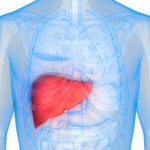Distal sensory polyneuropathy (DSPN)—a type of nerve damage that can lead to tingling and pain in the feet and hands—affects more than half of all people with HIV, according to several studies presented Monday, February 9, at 16th Conference on Retroviruses and Opportunistic Infections (CROI) in Montreal.
DSPN may be caused by a number of factors, including certain antiretroviral (ARV) drugs such as Videx (didanosine), diabetes and HIV itself. DSPN was a frequent problem in people with HIV before the introduction of combination ARV therapy, particularly new treatments that do not cause DSPN. Although the pain from DSPN can be severely disabling in its worst form, some people can have the condition without being aware of it.
To determine the prevalence of DSPN in people with HIV since the introduction of modern combination ARV therapy, Richard Ellis, MD, from the University of California in San Diego and his colleagues conducted neurological tests on 1,539 HIV-positive patients enrolled in the CNS HIV Antiretroviral Therapy Effects Research (CHARTER) study.
Ellis and his colleagues found that 57 percent of the patients had at least one symptom of DSPN, which in addition to pain and tingling may cause reduced sensation of vibration and touch in the hands and feet. One fortunate finding, according to Ellis, is that unlike in the early days of HIV, 85 percent of the patients in CHARTER diagnosed with DSPN reported only mild symptoms or no symptoms. Only 15 percent reported moderate to severe symptoms. Among people with only mild symptoms of DSPN, however, 23 percent reported reduced quality of life scores, which reflect changes in mental health, sense of physical well-being and ability to complete normal daily tasks.
Ellis stated that the factors associated with DSPN in the CHARTER study included older age, having once had a very low CD4 count, current use of ARV drugs, past use of Videx or Zerit (stavudine), and a history of opiate (e.g., heroin) abuse.
A second study presented by Scott Evans, PhD, from the Harvard School of Public Health in Boston indicates that the longer a person remains on ARV treatment, the more likely he or she is to be diagnosed with, or develop symptoms of, DSPN. Evans’s group analyzed the results of a brief neurological test conducted on 2,135 HIV-positive patients who were about to start ARV treatment. Tests were conducted both before and after people started treatment. Evans reported that the percentage of people with DSPN increased from 26 percent after 48 weeks on treatment to 41 percent after 384 weeks. The proportion of people with symptomatic DSPN increased from 8 percent of people at 48 weeks of treatment to 14 percent after 384 weeks of treatment.
Evans did not state that any specific ARV treatments were more likely than others to be linked to DSPN, nor did he speculate on the potential cause of the increase in DSPN prevalence over time. The data also do not definitely say that ARV therapy causes DSPN, but rather that long-term use of ARV treatment increases the likelihood of this neurological problem.
In a third presentation, Beau Ances, MD, PhD, a neurologist from the Washington University School of Medicine in St. Louis, further examined the potential risk factors for DSPN. He and his colleagues looked at data from 1,556 of the CHARTER study patients. Since ARV drugs, notably most of the protease inhibitors, can increase cholesterol and triglycerides, increase belly fat and reduce insulin’s ability to regulate blood sugar, Ances and his colleagues theorized that these symptoms, known as metabolic syndrome, could be linked to increased risk of DSPN.
Ances reported that two factors—diabetes and high triglycerides—were associated with an increased risk of DSPN. Other factors, such as a large waist line or increases in cholesterol, were not associated with DSPN.
Advertisement
Advertisement
Advertisement






4 Comments
4 Comments